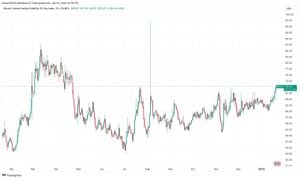Researchers have ventured deep within the quantum frontier, achieving what once seemed merely theoretical: the entanglement of Schrödinger's cat states. By synthesizing discrete-variable (DV) and continuous-variable (CV) encoding methods, this groundbreaking work could reshape the future of quantum computing.
For nearly three decades, quantum information processing has been divided along two lines: one grounded in discrete variables—such as photon states and spins—and the other hinging on the intricacies of continuous variables, like the enigmatic Schrödinger states. This duality, highlighting the strengths and weaknesses of both approaches, has fueled excitement and innovation within the field.
Now, researchers have successfully merged these two paradigms using superconducting Kerr parametric oscillators (KPOs) as their testbed. The novel hybrid approach allows for the entanglement of cat states via two different methods. The first involves the conversion of entangled Bell states from Fock-state encoding to cat-state encoding, and the second utilizes the implementation of a square-root iSWAP gate between two cat states, paving the way for universal quantum computing platforms.
“Our work offers powerful applications of DV–CV hybridization and marks a first step toward developing a multi-qubit platform based on planar KPO systems,” said the authors of the article.
The experiments demonstrated the remarkable capability of KPOs to maintain quantum coherence throughout the entanglement process. This is achieved through precise two-photon pumping and effective Hamiltonian engineering, which provide the means to control the quantum states involved, effectively bridging the gap between the discrete and continuous domains. The fidelity of the entangled states reached impressive levels, indicating the practical applicability of these findings.
One of the key highlights of this research is the method of entanglement-preserving conversion, which allows scientists to construct quantum networks using the cat states. This could streamline quantum computation methods previously reliant on more complex, Fock-based systems. The realization of such networks, which could potentially facilitate quantum communication and computing, reflects some of the ambitious goals of the research effort.
This achievement is not just technical but signifies a conceptual leap toward more efficient quantum information processes. By reducing experimental complexity and allowing familiar control schemes to be adapted for new uses, the blending of DV and CV methods could lower barriers to quantum computation.
“This hybridization is achieved through Hamiltonian engineering, combining moderate Kerr nonlinearity and two-photon pumping,” the authors noted, underscoring the significance of their approach.
The future of quantum networks rejuvenated by this research seems bright. With the promise of constructing reliable signal transmission lines and coping mechanisms for decoherence, researchers could soon see practical applications for their entangled cat states.
The findings affirm the superconducting planar KPO system's place as not just efficient but also revolutionary within quantum information processing circles. This platform shows great promise for advancing multi-kernel quantum systems, where cat states determined by parameters like photon number may facilitate diverse functionalities and operations.
With plans to explore even more complex entangled structures and possible interactions within larger quantum systems, the research team indicates forthcoming advancements might turn science fiction closer to tangible reality. This expansive leap could catalyze new methods not only limited to quantum computers but potentially reshaping different realms of quantum communication.
The promise of these entangled Schrödinger cat states might finally provide the means to resolve some of the long-standing puzzles surrounding quantum information, leading to autonomous quantum error correction and other techniques necessary for making quantum systems more resilient.



